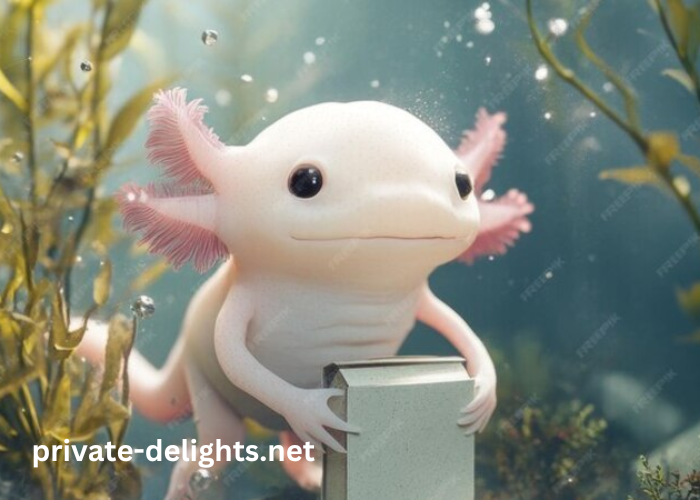The axolotl, often referred to as the “Mexican walking fish,” is not a fish at all but rather a remarkable amphibian. Known for its cute and quirky appearance, the axolotl has become a symbol of the “kawaii” culture, which emphasizes cuteness and charm in various forms. This creature is celebrated not only for its delightful looks but also for its extraordinary regenerative abilities and unique biological characteristics.
In this extensive guide, we will explore the kawaii:7-Xepu7gqzq= Axolotl, delving into its habitat, anatomy, care requirements, cultural significance, and more. Through detailed sections, you will gain a deeper understanding of why this enchanting creature has captured the hearts of so many.
What is an Axolotl?
An axolotl is a neotenic salamander, meaning it retains its juvenile features throughout its life. Unlike other amphibians that undergo metamorphosis, the axolotl remains aquatic and gilled, which is part of what makes it so visually captivating. Native to the ancient lake complex of Xochimilco in Mexico, the axolotl is an extraordinary example of evolutionary adaptation.
Key Features of Axolotls
One of the most striking features of the kawaii:7-Xepu7gqzq= Axolotl is its external gills, which resemble feather-like structures. These gills allow the axolotl to breathe underwater. Additionally, axolotls come in various colors, including pink, white, and even golden hues, contributing to their appeal.
Where Do Axolotls Live?
Historically, axolotls were found abundantly in the lakes and canals of Mexico City. Unfortunately, habitat destruction, pollution, and invasive species have led to a dramatic decline in their wild populations. Today, they are primarily found in captivity, where they are bred for research, pets, and conservation efforts.
The Importance of Conservation
The plight of the axolotl in the wild highlights the importance of conservation efforts. Protecting their natural habitats and maintaining genetic diversity in captive breeding programs are crucial steps to ensure their survival.
How to Care for Axolotls
If you’re considering adopting a kawaii:7-Xepu7gqzq= Axolotl, it’s essential to understand their care requirements. Proper care not only keeps your axolotl healthy but also allows you to enjoy its charming personality.
Tank Setup
Creating a suitable environment for your axolotl involves setting up a spacious aquarium with clean, dechlorinated water. Axolotls thrive in cool water temperatures, ideally between 16°C to 18°C (60°F to 64°F).
Diet and Nutrition
Axolotls are carnivorous and should be fed a balanced diet. Options include high-quality pellets, live worms, and small fish. Ensuring a varied diet is essential for their health and well-being.
Regular Maintenance
Maintaining clean water conditions is crucial. Regular water changes and monitoring water quality will help prevent diseases. It’s also essential to provide hiding spots and soft substrate to protect their sensitive skin.
What Makes Axolotls Kawaii?
The term “kawaii” encapsulates the essence of cuteness in Japanese culture. Axolotls exemplify this through their endearing features and playful behavior. Their wide smiles, large eyes, and unique gills create an irresistible charm.
Cultural Impact
The popularity of the kawaii:7-Xepu7gqzq= Axolotl has transcended its natural habitat, finding its way into art, fashion, and pop culture. From plush toys to digital art, the axolotl has become a beloved symbol of cuteness worldwide.
How Do Axolotls Regenerate?
One of the most fascinating aspects of the axolotl is its ability to regenerate lost body parts. This remarkable capability has made the axolotl a subject of extensive scientific research.
The Regeneration Process
When an axolotl loses a limb or even parts of its heart or brain, it can regenerate these tissues without scarring. The process involves the formation of a blastema, a mass of cells capable of growth and regeneration. Understanding how this works could lead to advancements in regenerative medicine for humans.
Common Myths About Axolotls
Despite their popularity, several misconceptions about axolotls persist. Addressing these myths is essential for promoting a better understanding of this unique species.
Myth 1: Axolotls Are Fish
A common misconception is that axolotls are fish. In reality, they are amphibians that remain in their larval form throughout their lives.
Myth 2: Axolotls Can Live in Warm Water
Another myth is that axolotls can thrive in warm water. They actually prefer cooler temperatures and can suffer from heat stress if kept in water that is too warm.
The Future of Axolotls
As awareness of the kawaii:7-Xepu7gqzq= Axolotl grows, so does the responsibility to protect this species. Conservation efforts and sustainable breeding practices are vital for ensuring that future generations can appreciate these enchanting creatures.
Supporting Conservation Initiatives
You can contribute to the conservation of axolotls by supporting organizations dedicated to habitat preservation and research. Every effort counts in helping maintain the delicate balance of their ecosystem.
Conclusion
The kawaii:7-Xepu7gqzq= Axolotl is more than just a cute face; it represents a unique blend of biological marvel and cultural significance. By understanding their care, conservation needs, and fascinating traits, we can appreciate the axolotl in all its glory.
As you venture into the world of axolotls, remember their importance in biodiversity and the role you can play in their preservation. Whether you admire them from afar or choose to care for one as a pet, axolotls will continue to inspire and enchant those who encounter them.



